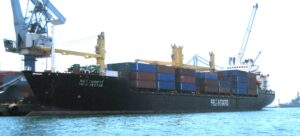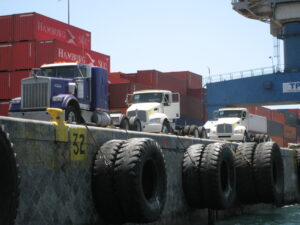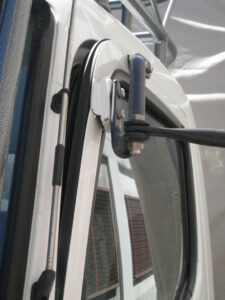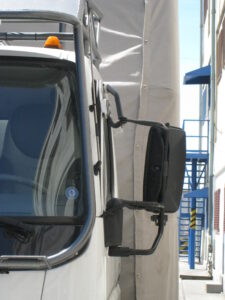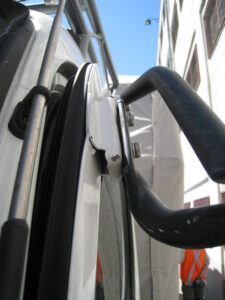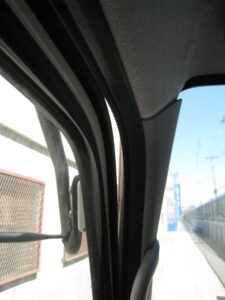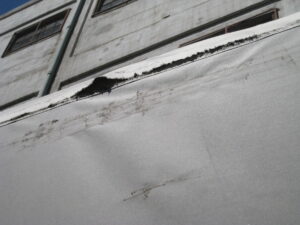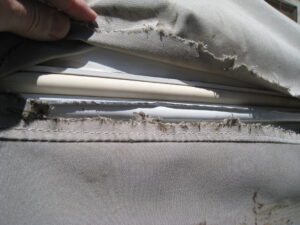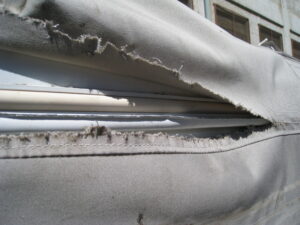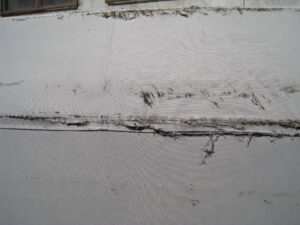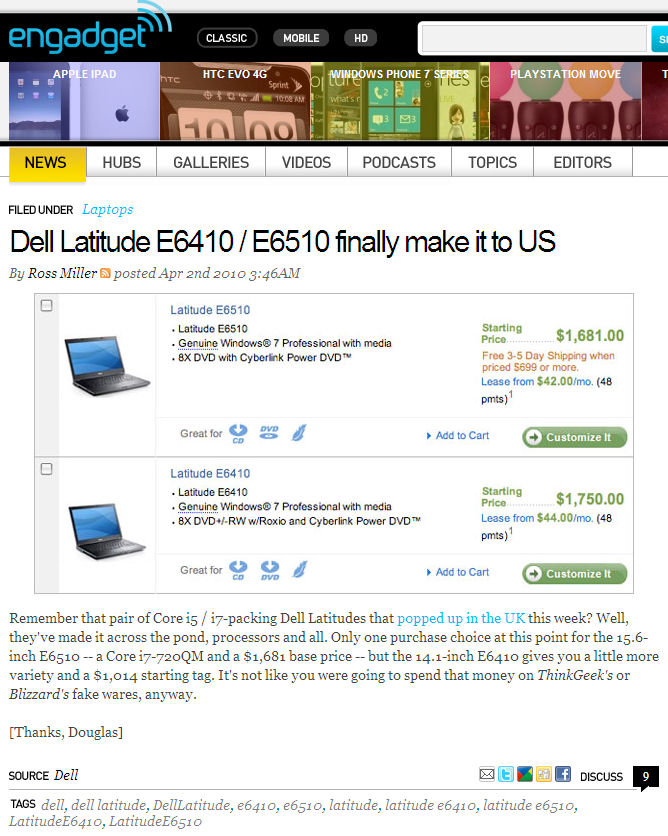
Fuso vs. Valparaiso Dock Crew
The ship carrying our Fuso, Seaboard’s Thor Nectar, arrived late morning on Saturday, 12 January.
Thor Nectar
Jorge and I spent from 2PM until 2:30AM watching the ship unload, hoping to see the Fuso come off. We were unsuccessful and finally gave up.
Fortunately, we had all the activity of a working dock area to keep us occupied, so we were never bored.
It also gave us the opportunity to observe the equipment and rigging techniques used to unload the ship.
For the first four hours, nothing much happened as the ship’s power was out, keeping its cranes in their at-sea, locked down positions. This limited activitity to what a mobile dock crane could pluck off the ship without fouling the ship’s cranes.
The dock crane kept busy by unloading these Kenworths off of the fantail.
Kenworths unloaded onto wharf
They eventually restored the ship’s power, the ship’s cranes were swung aside and containers started to come off the ship.
We spent most of the late afternoon and evening watching the dock crane and a crew of at least 20 working on rigging something off the ship. We couldn’t see the cargo, but could see the large lifting frame used to shuttle various slings, chains, etc. onto and off of the ship.
Large lift frame
We were convinced they were working on the Fuso, but alas, it was a medium sized Cat hoe. I estimated at least 50 man hours were invested in the rigging and lift.
About 9PM, just as the day’s light was fading, they began to pull off the Kenworths that were on the foredeck. They used the ship’s forward crane, a 20′ container clip, four cables rigged down from the clip, and a cradle assembly under the front and rear axle.
The crane lifted the cradles onto the deck, the deck crew muscled them into position and then the crane lowered the frame with its four dangling cables down over the Kenworth. All the while, the ocean swell was rocking the ship, the crane, elevated well above the deck, was swinging back and forth with the swell, and the four hanging cables were swinging too. All this added up to four large diameter cables dragged back and forth down the Kenworth as the deck crew attached them to the cradle. Finally, after much wrestling, the crane jerked up the slack, whipping the cables against the Kenworth, and lifted it off the deck.
Kenworth being craned from the deck to the wharf.
Photo by Jorge Valdes
As we watched the first Kenworth lifted off the deck and swung to the wharf I turned to Jorge and said, “If they use that small frame, cables and cradle on the Fuso they will destroy it.”
Late on Sunday, 13 January, we went down to the docks to inspect the Fuso, which came off the ship sometime after we gave up the vigil in the early hours of that morning.
Unfortunately, the deck crew had chosen not to use the proper frame for extracting the Fuso. They used the same small frame and careless techniques they used on the Kenworth.
As the front cables whipped around, one caught behind the driver’s mirror and bent out the cab door.
Detail showing freshly scraped mirror bracket, ripped bracket weld, bent door.
View from inside the cab, driver’s seat.
When they lifted the Fuso, the too narrow frame caused the rear cables to pinch the top, crushing the top corners.
The cover was, of course, destroyed.
Rear axle cable lift damage, passenger side.
Camper top corner detail.
We’ve located a new door in Santiago if the original cannot be restored to air and water tightness.
I suspect the unloading crew was under severe time pressure. The ship is scheduled in port for 24 hours and they were running at least four hours behind due to the ship’s power failure. Using the proper lift frame, the one used for the Cat hoe, would have cost them time, probably at least 40 minutes. They were unwilling to lose the time, so instead we lost our rig.
We are still awaiting the truck to clear customs so we can remove the cover and inspect the camper shell itself. If it has been compromised, this will be the world’s shortest expedition…
More to follow.
End of day, 15 January, update:
1. Our customs broker filed a damage claim with the port management company on our behalf.
2. They also booked an inspection meeting with customs and the company that manages the dock and the unloading company subcontractor for tomorrow. After that inspection takes place the truck will be turned over to customs and hopefully processed through to release tomorrow.
3. Identified, located and met with the manager of the body shop for the local Fuso dealer. He’s agreed to take on our project starting Thursday A.M. with the hopes of having it completed by end of day (7PM) Friday.
4. Body shop manager gave us a 100% confidence rating / assurance that they can fix the existing door.
5. We will pull the cover tomorrow for the inspection meeting and will know at that point if the camper shell was crushed / cracked / destroyed beyond repair.

